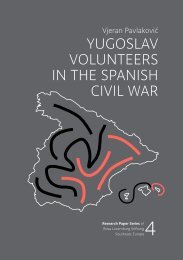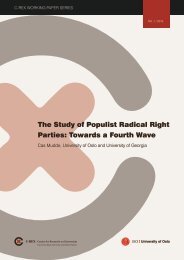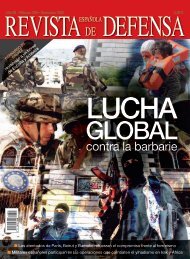SUMMARY
2016_classification_of_programmes_against_violent_islamist_extremism.pdf?utm_content=buffer41973&utm_medium=social&utm_source=twitter
2016_classification_of_programmes_against_violent_islamist_extremism.pdf?utm_content=buffer41973&utm_medium=social&utm_source=twitter
You also want an ePaper? Increase the reach of your titles
YUMPU automatically turns print PDFs into web optimized ePapers that Google loves.
2.2. STRUCTURAL CHARACTERISTICS OF INITIATIVES –<br />
RESOURCES AND FRAMEWORK CONDITIONS<br />
The main sponsors of the initiatives in the area of Islamist radicalisation<br />
prevention are state sponsors. 10a<br />
In the area of primary and secondary prevention, federal ministries<br />
10a1, (such as the Federal Ministry of Family Affairs, Senior Citizens,<br />
Women and Youth) sponsor the majority of the initiatives in<br />
the programme “Demokratie leben” [Living Democracy]. Other<br />
government sponsors include the Federal Ministry of the Interior,<br />
the Federal Office for Migration and Refugees and the Federal<br />
Agency for Political Education.<br />
“...that the state is a sponsor is normal, […] the question of who is administratively<br />
responsible for prevention […] is – I think – very much a role of the state.<br />
So if a situation has been identified as a problem, […] the state has to act”<br />
(Kiefer 2015, 273-294).<br />
In addition to sponsors at the federal level, supporters can be<br />
found at the state and regional level. A consideration of the regional<br />
level shows that, in the area of primary and secondary prevention,<br />
primarily authorities from youth and social affairs and institutes<br />
support the initiatives, along with public institutions such<br />
as universities.<br />
Initiatives receive additional funding from non-governmental organizations,<br />
such as foundations, associations or interest groups.<br />
In this context, private-sector enterprises play a subordinate role<br />
or no role at all.<br />
Within the scope of this investigation, it is not possible to provide<br />
precise information about the exact funding levels on the basis of<br />
the self-statements of the projects. Nevertheless, developments<br />
can be identified.<br />
A hybrid financing model is necessary, as the funding by public authorities,<br />
such as “Demokratie leben” (2015), also expects the initiatives<br />
to make their own contribution. This has implications for<br />
staffing, the amount of funds requested and the presence of small<br />
(or smaller) initiatives in this area. Thus these initiatives may apply<br />
for a smaller sum than is actually required in order to be able to<br />
afford their own contribution. As a result, the full-time equivalents<br />
15








